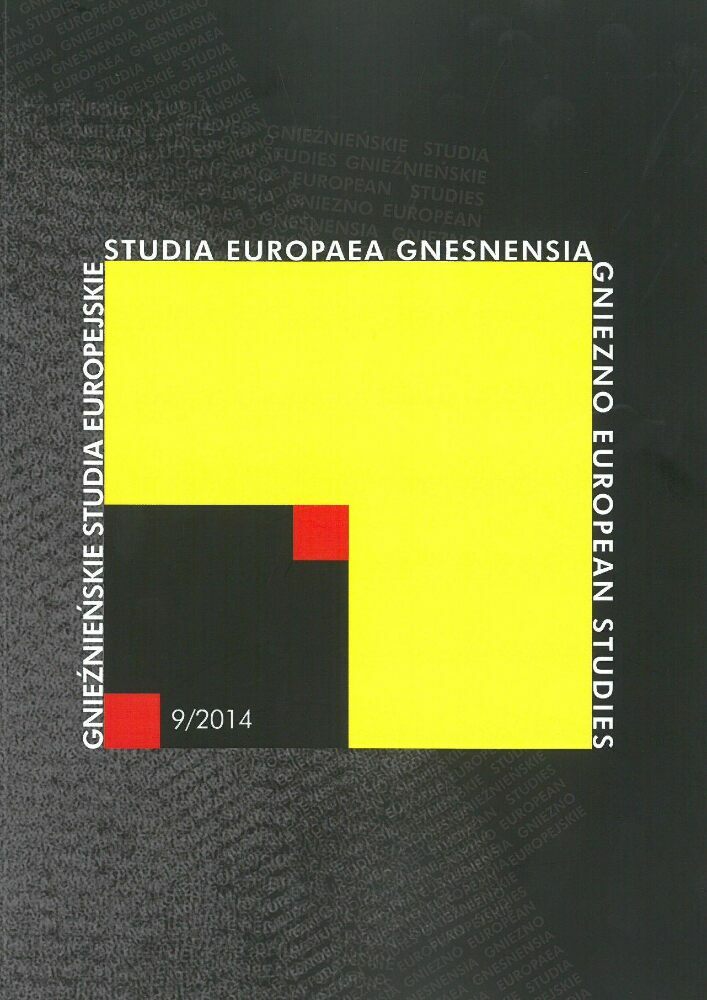Abstrakt
The aim of this article is to present the feminist thought of Prof. Rachel Elior (the Hebrew University, Jerusalem), who is a world-known scholar working, mainly, in the field of Jewish mysticism in its different forms and aspects. Nevertheless, Prof. Elior dedicated some of her works also to the problem of Jewish women who, for centuries, have been, generally, absent, in social, religious and cultural life of Jewish communities living in different parts of the world. As the analysis of Elior’s feminist literature shows, the aforementioned absence of the women has been mainly caused by the patriarchal order, created “by men and for men”, by means of some male narratives and male mythology, in which women seem to be – usually - perceived as some inferior creatures or they are simply demonized.Bibliografia
Barthes R., Mitologie, przeł. A Dziadek, Warszawa 200 0, s. 240.
Biale D., Eros and the Jews from Biblical Israel to Contemporary America, New York, 1992,
Bloom M., Żydowski mistycyzm i magia, przeł. P. Sajdek, Kraków 2011
Elior R., „Present but Absent”, „Still Life”, and „A Pretty Maiden Who Has No Eyes”. On the Presence and Absence of Women in the Hebrew Language, in the Jewish Religion, and in Israeli Life, Studies in Spirituality 20, 2010, s. 381
Elior R., Blessed Art Thou, Lord Our God, who Has Not Made Me a Woman, [w:] eadem (red.), Men and Women. Gender, Judaism, and Democracy, Jerusalem–New York 2004, s. 82.
Elior R., Jewish Mysticism. Th e Infinite Expression of Freedom, Oxford 2007.
Elior R., Ki-teze. When Thou Goest Forth, [w:] N. Rothenberg (red.), Wisdom by the Week. The Weekly Torah Portion as an Inspiration for Thought and Creativity, Jersualem 2011,
Elior R., Like Sophia and Marcelle and Lizzie, [w:] Dybbuks and Jewish Women in Social History Mysticism and Folkore, Jerusalem–New York 2008, s. 35
Elior R., Mistyczne źródła chasydyzmu, przeł. M. Tomal, Kraków 2009.
Elior R., Speaking Voices; Silencing Worlds; Silenced Voices, [w:] Dybbuks and Jewish Women in Social History, Mysticism and Folklore, Jerusalem–New York 2008, s. 46–125.
Elior R., The Mystical Origins of Hasidism, Oxford 2006.
Elior R., The Paradoxical Ascent to God. The Kabbalistic Theosophy of Habad Hasidism, Albany 1992.
Elior R., The Three Temples. On the Emergence of Jewish Mysticism, Oxford 2004.
Fiske J., Wprowadzenie do badań nad komunikowaniem, przeł. A. Gierczak, Wrocław 2003
Flawiusz J., Przeciwko Apionowi. Autobiografia, przeł. T. Radożycki, Warszawa 2010
Glensk Cz.J. (red.), Myślę, więc jestem. Aforyzmy, maksymy, sentencje, Komorów 1993, s. 104.
Grupińska A., Najtrudniej jest spotkać Lilit. Opowieści chasydek, Warszawa 1999.
Madeyska-Pawlikowska A., Wstęp, [w:] S.Z. Rapoport (An-ski), Na pograniczu dwóch światów. Dybuk, s. 9.
Majmon S., Autobiografia, przeł. L. Belmont, Warszawa 2007, 1,
Neugroschel J., The Dybbuk and the Yiddish Imagination. A Haunted Reader, Syracuse, 2000, s. xv-xvi.
Okudżawa B., Piosenka o błękitnym baloniku, przeł. W. Woroszylski, [w:] idem, s. 215.
Okudżawa B, Zamek nadziei. Wiersze i pieśni, Kraków 1984,
Pismo Święte Starego i Nowego Testamentu w przekładzie z języków oryginalnych, Wydawnictwo Pallottinum, Poznań–Warszawa 1980.
Pomian K., Słownik pojęć antropologii strukturalnej Lévi-Straussa, [w:] C. Lévi-Strauss, Antropologia strukturalna, przeł. K. Pomian, Warszawa, 2009, s. 385.
Rapoport (An-ski) Sz.Z., Na pograniczu dwóch światów. Dybuk, przeł. A. Hadari, Kraków 2007, s. 79.
Scholem G., Kabała i jej symbolika, przeł. R. Wojnakowski, Kraków, 1996
Scholem G., O mistycznej postaci bóstwa, przeł. A.K. Haas, Warszawa 2010,
Sidi E., Izrael oswojony, Warszawa 2013
Szurmiak K., Kobieta w lustrze. Portret Żydówki końca XVI wieku na podstawie Brantszpigl, [w:] J. Lisek (red.), Nieme dusze? Kobiety w kulturze jidysz, Wrocław 2010, s. 169.
Tołstoj L., Anna Karenina, przeł. K. Iłłakowiczówna, Warszawa 1986,
von Heyer J.A., Die Gottlose, Der Spiegel 1, 2014, s. 83.
Wodziński M., O bocianach z żabiej perspektywy, czyli kobiety i chasydyzm, [w:] J. Lisek (red.), Nieme dusze?, s. 94.
Wolitz S.L., Inscribing An-sky’s „Dybbuk” in Russian and Jewish Letters, [w:] G. Safran, S.J. Zipperstein (red.), The Worlds of S. An-sky. A Russian Intellectual at the Turn of the Century, Standford 2006, s. 184.
Życiorys naukowy Prof. Rachel Elior, http://pluto.huji.ac.il/~mselio/cv.html.
